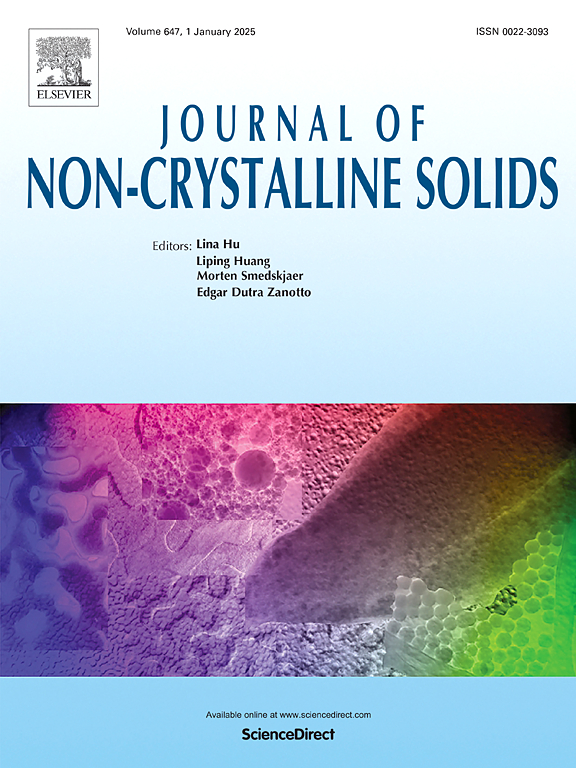Influence of ZnO content on liquid-liquid phase separation in photothermal refractive glass
IF 3.5
3区 材料科学
Q1 MATERIALS SCIENCE, CERAMICS
引用次数: 0
Abstract
At present, volume Bragg grating (VBG) is the core devices in the field of precision optical field modulation, and their performance is mainly influenced by the substrate photothermal refractive (PTR) glass. The liquid phase separation (LLPS) behavior occurring in the base glass can lead to unnecessary scattering losses and have adverse effects on the engineering applications of VBG. In recent years, many glass scientists have conducted research on the liquid-liquid phase separation (LLPS) of glass, believing that the structure of glass phase separation is related to the composition of the glass. This study used high-temperature melting method to prepare Na-Zn-Al-Si PTR glass doped with Ag, Ce, Sn and other elements through two-step heat treatment. In this experiment, the influence mechanism of ZnO on the LLPS of PTR glasses was investigated by controlling the doping amount of ZnO. Modern analysis techniques were used to investigate the mechanism of ZnO on the LLPS, the results confirm that no crystal phase is generated during the glass phase separation in this work, and doping 4 mol% ZnO is beneficial for suppressing the LLPS of PTR glasses. In addition, the introduction of Na2O by using NaNO3 can avoid the generation of Ag2O and Ag2CO3 impurities, which is conducive to the precipitation of NaF grains.
氧化锌含量对光热折射玻璃中液相-液相分离的影响
目前,体布拉格光栅(VBG)是精密光场调制领域的核心器件,其性能主要受基片光热折射玻璃(PTR)的影响。基底玻璃中发生的液相分离(LLPS)行为会导致不必要的散射损失,对 VBG 的工程应用产生不利影响。近年来,许多玻璃科学家对玻璃的液-液相分离(LLPS)进行了研究,认为玻璃相分离的结构与玻璃的成分有关。本研究采用高温熔融法,通过两步热处理制备掺杂了Ag、Ce、Sn等元素的Na-Zn-Al-Si PTR玻璃。实验中,通过控制氧化锌的掺量,研究了氧化锌对 PTR 玻璃 LLPS 的影响机理。实验采用现代分析技术研究了 ZnO 对 LLPS 的影响机理,结果表明在本实验中玻璃相分离过程中没有晶相产生,掺杂 4 mol% 的 ZnO 有利于抑制 PTR 玻璃的 LLPS。此外,利用 NaNO3 引入 Na2O 可以避免 Ag2O 和 Ag2CO3 杂质的生成,有利于 NaF 晶粒的析出。
本文章由计算机程序翻译,如有差异,请以英文原文为准。
求助全文
约1分钟内获得全文
求助全文
来源期刊

Journal of Non-crystalline Solids
工程技术-材料科学:硅酸盐
CiteScore
6.50
自引率
11.40%
发文量
576
审稿时长
35 days
期刊介绍:
The Journal of Non-Crystalline Solids publishes review articles, research papers, and Letters to the Editor on amorphous and glassy materials, including inorganic, organic, polymeric, hybrid and metallic systems. Papers on partially glassy materials, such as glass-ceramics and glass-matrix composites, and papers involving the liquid state are also included in so far as the properties of the liquid are relevant for the formation of the solid.
In all cases the papers must demonstrate both novelty and importance to the field, by way of significant advances in understanding or application of non-crystalline solids; in the case of Letters, a compelling case must also be made for expedited handling.
 求助内容:
求助内容: 应助结果提醒方式:
应助结果提醒方式:


